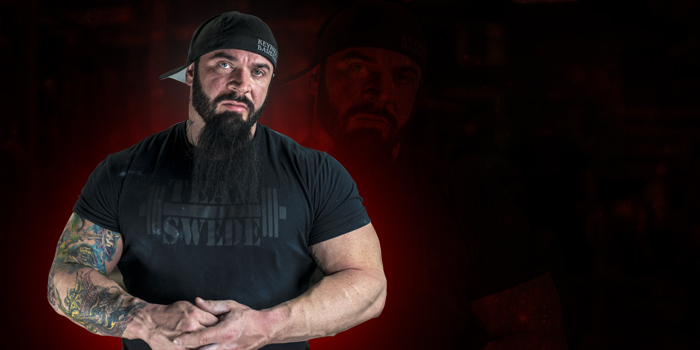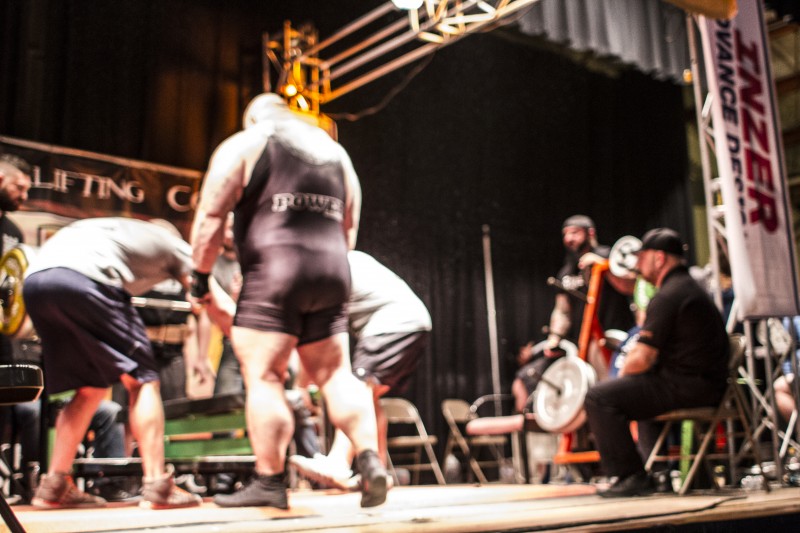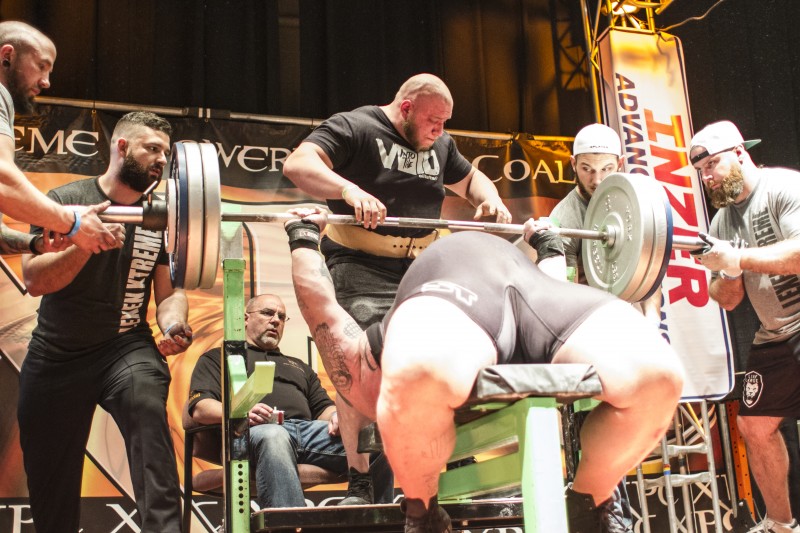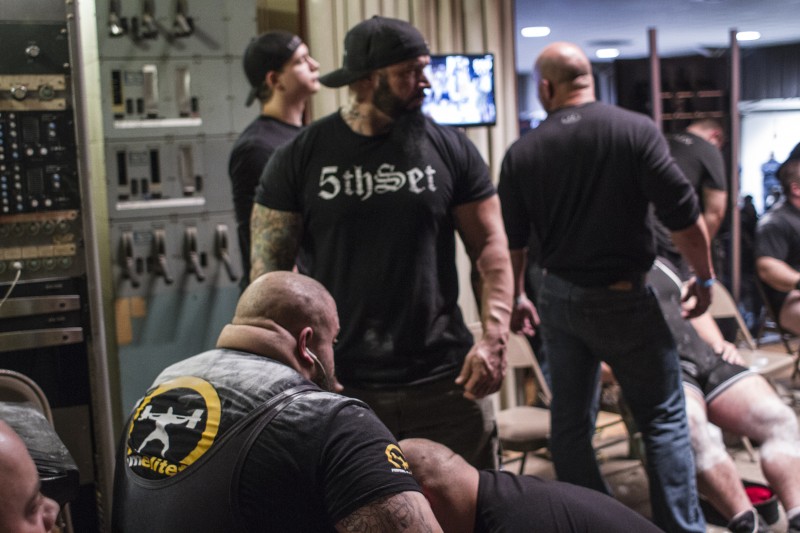
Let me start this with a cliche, commonly applied to the subject of attempt selection for powerlifting.
"It's a marathon, not a sprint." Sound familiar? You've probably said it.
What cliche could possibly be more tedious than these words falling from the mouth-breathing lips of a 300-pound powerlifter who couldn't run 300 feet to save his life?
None; yet there is no tedium that we will be exposed to more perpetually. Hang around powerlifting meets for any extended number of calendars. If those words don't begin to make you long for seppuku, you're a better-evolved creature than I.
Is it bad advice? I've heard the thing spewed on the platform more times than I care to recall. Once by a lifter who only hours later went on to make an indefensible, ambition driven, misjudgment in attempt selection, which resulted in injury. Yes, in the same meet where he warned another lifter, via cliche, not to do exactly what he went on to do right away.
WATCH: Table Talk with Swede Burns and JP Carroll — Why an Advanced Powerlifter Needs a Coach
Good advice that doesn't get followed is bad advice.
Well, plenty of people are great at giving advice and suck at taking it. Right? That's definitely true. But, I think there is more to it than that. Something gets lost in the cliche. We've said it and repeated it so many times, the value begins to blur; it's somewhat contradictory and equivocal. Then, also, analogies involving marathons may not be the most easily digestible for the powerlifting population. That's another consideration.
"It's a marathon, not a sprint."
No, it's fucking neither. It's powerlifting.
The truth is: when we view our decisions as either black or white, pacing or sprinting, single factor equations, they do become a lot easier to swallow. But, in all fairness, things are rarely ever that simple. So advice like that is a trap. Believe me, I wish it were that straightforward. It never is.
You want that total. You have your heart set on it.
If things are black and white, just set your attempts to the numbers that will add up to it. But wait, it's a marathon, not a sprint. That adds a layer of complexity. You're either pacing yourself or sprinting. Still pretty black and white, I guess. But how do you decide which is appropriate and when?
You want that total. You have your heart set on it.
You are going to need this number on bench press to get the total you want. Black and white. But you strained your pec five weeks ago. That adds another layer of complexity to an already convoluted situation. Pacing yourself and sprinting. Black and white.
How about if I tell you that a powerlifting meet is actually a microcosm of a powerlifting career? Or that the same is true for a single training session? Like looking into an endlessly repeating, magnifying mirror; the entire picture painted, a fractal universe of recapitulating knowns and unknowns spinning into themselves and each other; that the answer lies somewhere within.
If I told you that, it would be absolutely true, but you'd still look at me, bewildered as fuck. Wouldn't you? Yeah, you're probably googling shit right now trying to figure out what the fuck I'm talking about, and so that bit of wisdom, though it is the truth, would be terribly difficult to swallow. Obviously not the best thing to feed you during a powerlifting meet, but about as useful as a well meaning, ill-conceived cliche.
Could it be that we are looking at numbers in powerlifting and this entire attempt selection process from the most backward, obstructed, fairy tale, fucking fantasy view possible? I think we are.
When we are selecting our attempts, let's forget about that total we have our hearts set on. Let's not try to feed this donkey by shoving carrots up its ass. I think there is a better way.
Rather than starting with what we are wishing and hoping for when selecting attempts for a meet, why don't we begin with our feet firmly planted on the ground and use some solid compass point to determine what we are going to be safely capable of on that day? I have a very effective (the most effective) way to determine what attempts should be for a given lifter, in three steps.

The first step is outlining the attempts based on the most accurate compass point available: that lifter's performance during their peaking cycle for that meet. This, or something like it should be step one. My methodology employs a formula which makes this part of the process almost thoughtless, but any realistic way to select numbers ahead of time, based on something other than hopes and dreams is a step in the right direction. A good rule of thumb is to never let the jumps between attempts exceed 7.5% of the lifter's max for that lift. I prefer to stay as close to 7% as possible and to never exceed 104% of the best lift that has already been successfully completed in training for the third attempt.
The following is a brief excerpt from my new book, 5thSet: Evolutions.
"A final point I want to touch on for attempt selection is number goals. I would strongly suggest all lifters make waste of preconceived notions they have about number goals for their meet. I am unable to calculate how many times I've seen a lifter throw away an awesome PR total, and unnecessarily risk injury in the process, reaching for something which is currently beyond their grasp.
Please don't think the appeal of round numbers is lost on me. A 2000 pound raw total. A 600 pound bench press. These are sexy numbers. I get it. I want you to hit all of the numbers you've dreamt about and worked toward. The surest, quickest, safest path to doing that is following the formula. We have to function in reality here. Your wishes and goals should not be factors that influence the selection of your attempts.
Trusting the formula dramatically increases the likelihood of successfully completing the heaviest attempt possible for each lift, leaving you with the heaviest total you're capable of. Believe me when I tell you that putting together the heaviest total you can is going to feel a lot better than missing unrealistic thirds which would have added up to some arbitrary figure you might have preferred."

So that is the first step, but the second is also very important. We need to ditch the black and white. As many of us as there are who screw up step one, there are plenty who nail that part and completely blow it anyway. On this planet, there are almost no absolutes.
For this reason, it's important to consider any confounding variables, which is a fancy way of saying we need to think about anything else going on in our lives that could interfere with our ability to perform the way we should. For example, a pec strain, not getting enough sleep, not eating enough food, sleeping in your car for the week before your meet because your wife hates your guts or any other type of bullshit that could throw you off your game.
This leads us right into the third and final step to intelligent attempt selection: considering sustainability. Recoverability and adaptability are finite. We can only recover from and adapt to a certain amount of stimulus in a given timeframe. Understanding that is understanding progress is powerlifting is a process and it's going to take a lot of time to reach our respective potentials if we ever even get there. Most get sidelined or ruined by injuries long before they ever reach it. This is the basis for the 5thSet methodology. Finishing the course. To do that we need to consider sustainability. We need to be able to finish not only the meet but also finish our careers, whole. Competing is dangerous enough without making stupid decisions.
Why do so few accomplish what they are capable of? We'd like to believe the answer lies in a lack of hard work and sacrifice, and at first glance that makes sense. These are two important factors of the equation in the math of success, in any endeavor. But, believe it or not, most of us with the potential for greatness who fall short do not do so in those areas. Most of us are hungry enough. It is, in fact, the same hunger and passion that drives us to go as far as we do, which is more likely to sink us, if we submit to it completely. The stronger that hunger, the more vigilant we must be about every decision we make. We have to be strategists. We have to play the long game.
So, in review, the items on your attempt selection checklist should be as follows:
- Start with realistic numbers based on something solid.
- Consider confounding factors.
- Consider sustainability.
If this helped you, please share it.












2 Comments